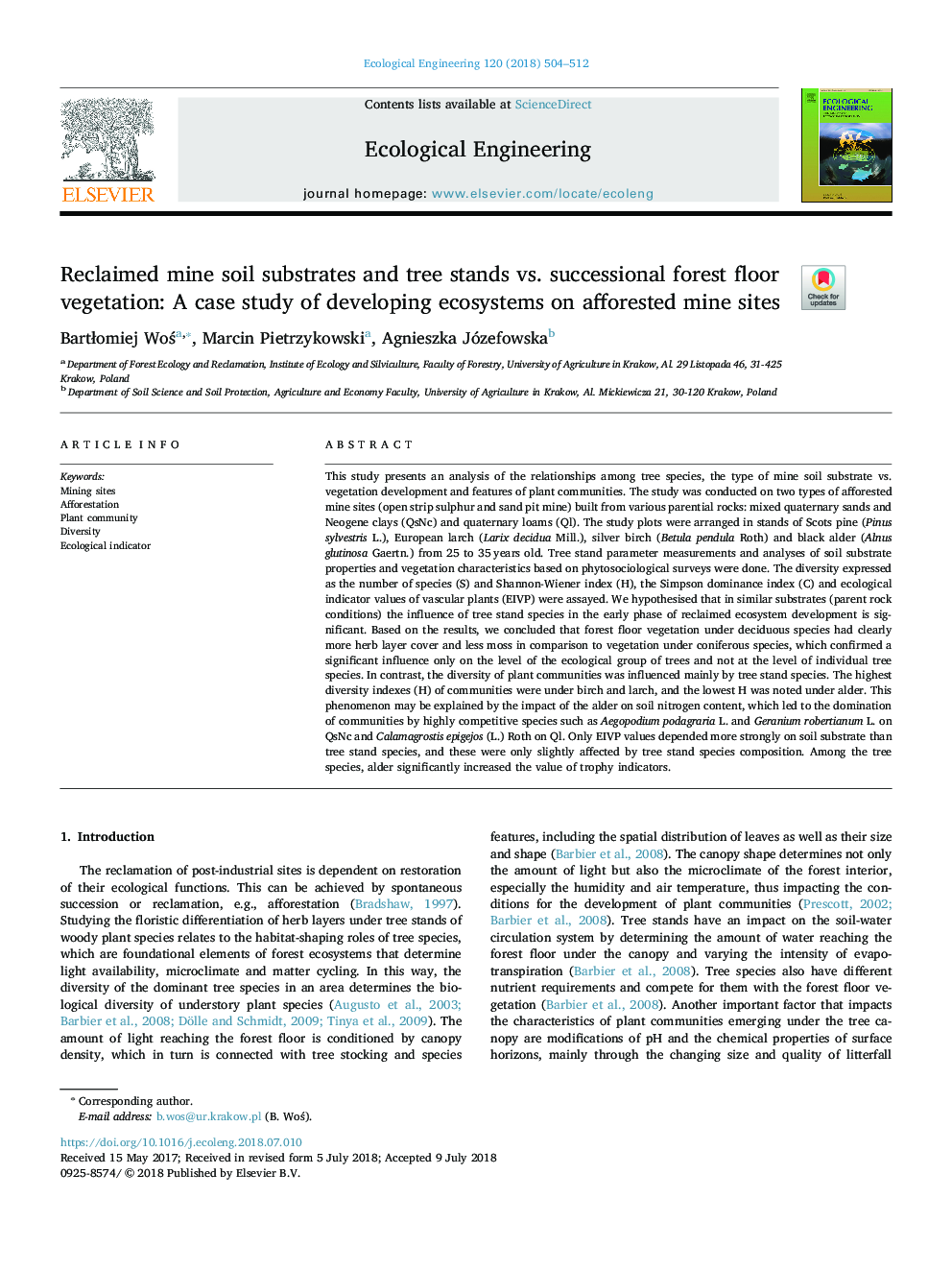| Article ID | Journal | Published Year | Pages | File Type |
|---|---|---|---|---|
| 8847859 | Ecological Engineering | 2018 | 9 Pages |
Abstract
This study presents an analysis of the relationships among tree species, the type of mine soil substrate vs. vegetation development and features of plant communities. The study was conducted on two types of afforested mine sites (open strip sulphur and sand pit mine) built from various parential rocks: mixed quaternary sands and Neogene clays (QsNc) and quaternary loams (Ql). The study plots were arranged in stands of Scots pine (Pinus sylvestris L.), European larch (Larix decidua Mill.), silver birch (Betula pendula Roth) and black alder (Alnus glutinosa Gaertn.) from 25 to 35â¯years old. Tree stand parameter measurements and analyses of soil substrate properties and vegetation characteristics based on phytosociological surveys were done. The diversity expressed as the number of species (S) and Shannon-Wiener index (H), the Simpson dominance index (C) and ecological indicator values of vascular plants (EIVP) were assayed. We hypothesised that in similar substrates (parent rock conditions) the influence of tree stand species in the early phase of reclaimed ecosystem development is significant. Based on the results, we concluded that forest floor vegetation under deciduous species had clearly more herb layer cover and less moss in comparison to vegetation under coniferous species, which confirmed a significant influence only on the level of the ecological group of trees and not at the level of individual tree species. In contrast, the diversity of plant communities was influenced mainly by tree stand species. The highest diversity indexes (H) of communities were under birch and larch, and the lowest H was noted under alder. This phenomenon may be explained by the impact of the alder on soil nitrogen content, which led to the domination of communities by highly competitive species such as Aegopodium podagraria L. and Geranium robertianum L. on QsNc and Calamagrostis epigejos (L.) Roth on Ql. Only EIVP values depended more strongly on soil substrate than tree stand species, and these were only slightly affected by tree stand species composition. Among the tree species, alder significantly increased the value of trophy indicators.
Related Topics
Life Sciences
Agricultural and Biological Sciences
Ecology, Evolution, Behavior and Systematics
Authors
BartÅomiej WoÅ, Marcin Pietrzykowski, Agnieszka Józefowska,
